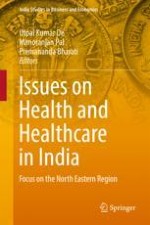2018 | OriginalPaper | Buchkapitel
14. Is India on the Path to Replacement Fertility Soon? Exploring the Role of Rural–Urban Differential Pace and Timing of Fertility Decline
verfasst von : Tapan Kumar Chakrabarty, Mallika Deb
Erschienen in: Issues on Health and Healthcare in India
Verlag: Springer Singapore
Aktivieren Sie unsere intelligente Suche, um passende Fachinhalte oder Patente zu finden.
Wählen Sie Textabschnitte aus um mit Künstlicher Intelligenz passenden Patente zu finden. powered by
Markieren Sie Textabschnitte, um KI-gestützt weitere passende Inhalte zu finden. powered by
